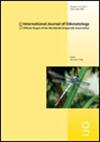印度喜马拉雅山脉东部锡金有机梯田水稻栽培对牙形石保护的效果
IF 1
4区 农林科学
Q3 ENTOMOLOGY
引用次数: 2
摘要
自然生境向农业景观的转化是导致生境丧失的主要原因之一。人类改造的生态系统,如农业用地,在保护其原生生物多样性方面得到了极大的关注。在印度东喜马拉雅锡金地区,通过比较有机梯田水稻种植与附近有河流的天然林系统,研究了有机农业生态系统保护土壤多样性的有效性。我们采用样带计数法(设置6个永久样带)对2个村庄(南锡金的灵木村和北锡金的宗古村)进行了48次样带计数。本研究共记录到7科、异翅目16只、钩翅目15只、2亚目31种、881只。其中,在梯田栽培和天然林系统中分别发现3科20种和7科18种。Beta多样性估算结果表明,两种土地利用类型间齿形藓类的群落组成在定性(发生率)和定量(丰度)上存在差异。更替分量(在基于丰度的β多样性测量中为丰度平衡)对总体β多样性的贡献较高,表明由于环境分选,一种物种组合正在被另一种物种组合所取代。两种生境间群落组成差异具有统计学意义。研究结果表明,有机湿地生境对喜马拉雅地区齿形动物及其相关生物多样性(尤其是爬行动物)的保护具有重要意义,亟待保护。本文章由计算机程序翻译,如有差异,请以英文原文为准。
Effectiveness of organic terrace rice cultivation in conservation of odonates in Sikkim, Eastern Himalaya, India
Conversion of natural habitat into agricultural landscape has been identified as one of the major drivers of habitat loss. Human-modified ecosystems, such as agricultural land, have gained significant attention in terms of the conservation of their native biodiversity. We studied the effectiveness of organic agroecosystems in conserving odonate diversity by comparing organic terrace rice cultivation with a nearby natural forest system with streams in Sikkim, Eastern Himalaya, India. We sampled adult odonates using a transect count method (laying six permanent transects) covering two villages (Lingmoo in South Sikkim and Dzongu in North Sikkim), making a total of 48 transect counts. A total of 881 individual odonates representing 31 species under two suborders (16 Anisoptera and 15 Zygoptera) and seven families were recorded during this study. Of these, 20 species representing three families and 18 species representing seven families were observed in terrace rice cultivation and the natural forest system, respectively. Beta diversity estimates showed that the community composition of the odonates differed qualitatively (incidence measure) and quantitatively (abundance measure) between the two land use types. Turnover component (abundance balance in case of abundance based beta diversity measure) had higher contribution in the overall beta diversity, suggesting that one assemblage of species is being replaced by another due to environmental sorting. The variation in community composition between the two habitats was statistically significant. Our results suggest that organic wetland habitats are important for conservation of odonates and associated biodiversity (especially herpetofauna) in the Himalaya and require urgent conservation attention.
求助全文
通过发布文献求助,成功后即可免费获取论文全文。
去求助
来源期刊

International Journal of Odonatology
ENTOMOLOGY-
CiteScore
2.30
自引率
0.00%
发文量
15
审稿时长
>12 weeks
期刊介绍:
International Journal of Odonatology (IJO) is aimed at providing a publication outlet for the growing number of students of Odonata. It will address subjects such as the ecology, ethology, physiology, genetics, taxonomy, phylogeny and geographic distribution of species. Reviews will be by invitation, but authors who plan to write a review on a subject of interest to the journal are encouraged to contact the editor.
 求助内容:
求助内容: 应助结果提醒方式:
应助结果提醒方式:


